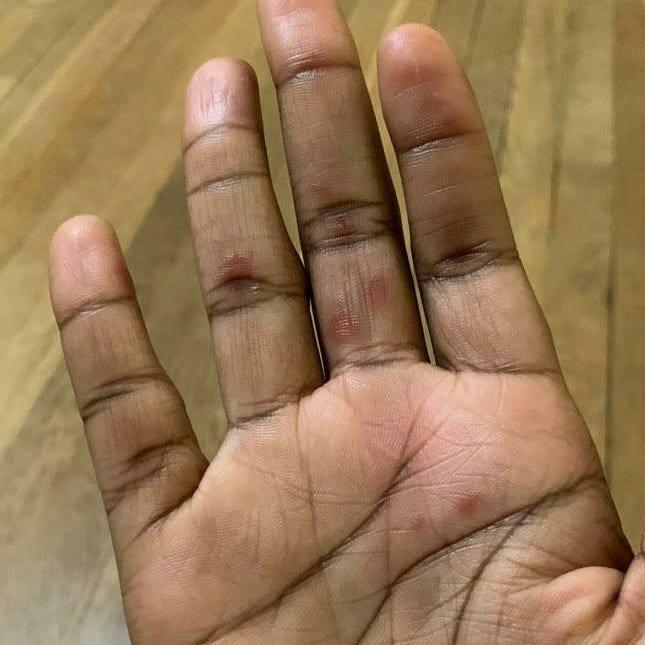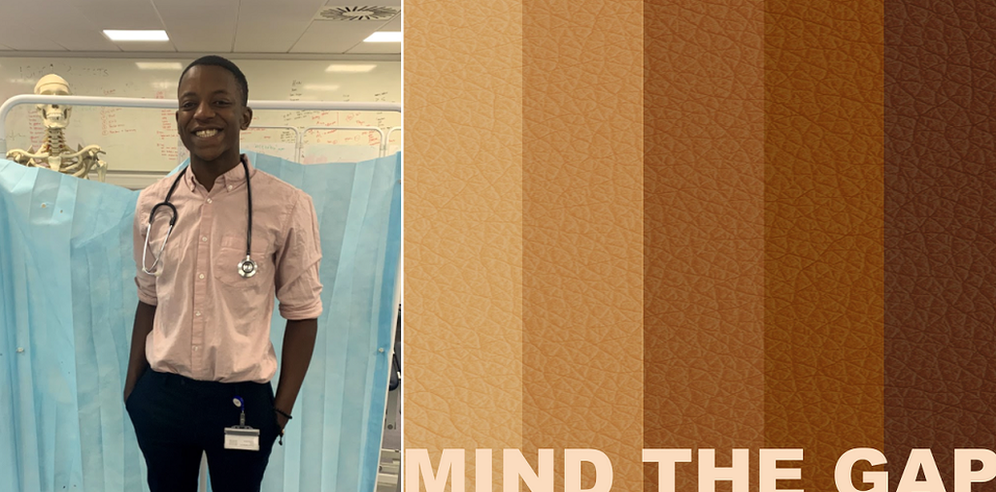What do medical conditions look like on darker skin?
- Published
- comments
WATCH: Meet the people trying to make healthcare more diverse
When a person falls ill, a doctor or nurse might look at symptoms on their skin to figure out what's wrong with them.
For example, eczema is often identified by a red rash and yellow skin is a key symptom for the condition jaundice.
Online resources like the NHS' health A-Z may be also used by members of the public if they're worried about certain symptoms they think they have. This provides simple descriptions and pictures for different conditions and people can then get professional medical help if they feel they need it.
However, popular symptoms which doctors and nurses use to work out if someone has a particular illness may be harder to spot on brown and black skin, and in some cases, the symptoms can look completely different. This is because they don't always look the same on all skin tones.
Trying to make a change
Many medical students and staff use textbooks and online resources to help them correctly diagnose illnesses their patients might have.
However, many of the pictures found in these books or on the internet only show what conditions look like on white skin. There are fewer images which show symptoms on darker complexions.
"It is important for doctors to be able to see what conditions look like on many skin colours. That's because they can present very differently depending on a person's skin tone," Ellen Margolis told Newsround.

Hand, foot and mouth disease, which is a very common infection, may look different on dark skin
Ellen decided to create the Instagram page Brown Skin Matters because of her mixed race son. She noticed that lots of the photos she came across on medical websites only showed symptoms for conditions on white skin and she wanted to create an alternative platform for other parents and doctors to use. The Brown Skin Matters page currently has more than 60,000 followers and lots of medical staff have used it to help them identify conditions in their young patients.
"If a doctor doesn't know what to look for, they may not be able to diagnose a condition properly. If a patient isn't diagnosed, they might not receive the treatment they need to get better," Ellen said.

Medical student Malone Mukwende has created a resource containing images of conditions on darker skin
Malone Mukwende is a medical student and he has helped to produce a guide called Mind The Gap. It contains images of medical symptoms and signs on darker skin and also highlights the different language that needs to be used when describing what certain conditions might look like on black and brown skin.
Almost 200,000 people have signed a petition calling for the General Medical Council (GMC), which oversees medical education and practice in the UK, to make materials used in teaching more diverse.
The GMC doesn't actually have the power to decide what students learn as this is up to individual universities, but it does believe more needs to be done.
"It's very important to include examples of people from different ethnicities in courses and textbooks so that doctors are able to learn and recognise the different ways diseases can appear on black and brown skin," said Professor Colin Melville, who is the Medical Director and Director of Education and Standards at the GMC.
"We are working with medical schools on this issue and want to make sure that our future doctors see and learn about people of all colours and races in their training."

Symptoms can look different on darker skin tones
The NHS has also acknowledged that its Health A-Z website needs to be more reflective of British society today.
A spokesperson told Newsround: "Skin conditions and other illnesses might not look the same for everyone, depending on the colour of their skin. So, we know how important it is to have information and pictures covering different skin tones."
"We're starting work to look at how we do this better. This will involve speaking to people who use our website so we really understand more about what they need. We'll also get advice from specialist doctors and nurses about how different conditions can affect different people. This will help us include pictures and descriptions that help everyone find the health information and advice they need."
- Published17 June 2020

- Published28 January 2020

- Published24 March 2020

